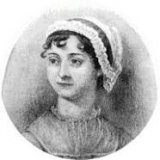Analysis of Pretty Cow
Jane Taylor 1783 (London) – 1824
Thank you, pretty cow, that made
Pleasant milk to soak my bread
Every day and every night,
Warm, and fresh, and sweet, and white.
Do not chew the hemlock rank,
Growing on the weedy bank;
But the yellow cowslips eat,
That will make it very sweet.
Where the purple violet grows,
Where the bubbling water flows,
Where the grass is fresh and fine,
Pretty cow, go there and dine.
| Scheme | XXAA BBCC DDEE |
|---|---|
| Poetic Form | Quatrain (67%) |
| Metre | 1110111 1011111 100101001 1010101 111011 1010101 101011 1111101 10101001 10100101 1011101 1011101 |
| Closest metre | Iambic tetrameter |
| Characters | 371 |
| Words | 71 |
| Sentences | 4 |
| Stanzas | 3 |
| Stanza Lengths | 4, 4, 4 |
| Lines Amount | 12 |
| Letters per line (avg) | 24 |
| Words per line (avg) | 6 |
| Letters per stanza (avg) | 97 |
| Words per stanza (avg) | 23 |
Font size:
Submitted on May 13, 2011
Modified on May 03, 2023
- 21 sec read
- 5,959 Views
Citation
Use the citation below to add this poem analysis to your bibliography:
Style:MLAChicagoAPA
"Pretty Cow" Poetry.com. STANDS4 LLC, 2024. Web. 23 Apr. 2024. <https://www.poetry.com/poem-analysis/21231/pretty-cow>.


Discuss this Jane Taylor poem analysis with the community:
Report Comment
We're doing our best to make sure our content is useful, accurate and safe.
If by any chance you spot an inappropriate comment while navigating through our website please use this form to let us know, and we'll take care of it shortly.
Attachment
You need to be logged in to favorite.
Log In